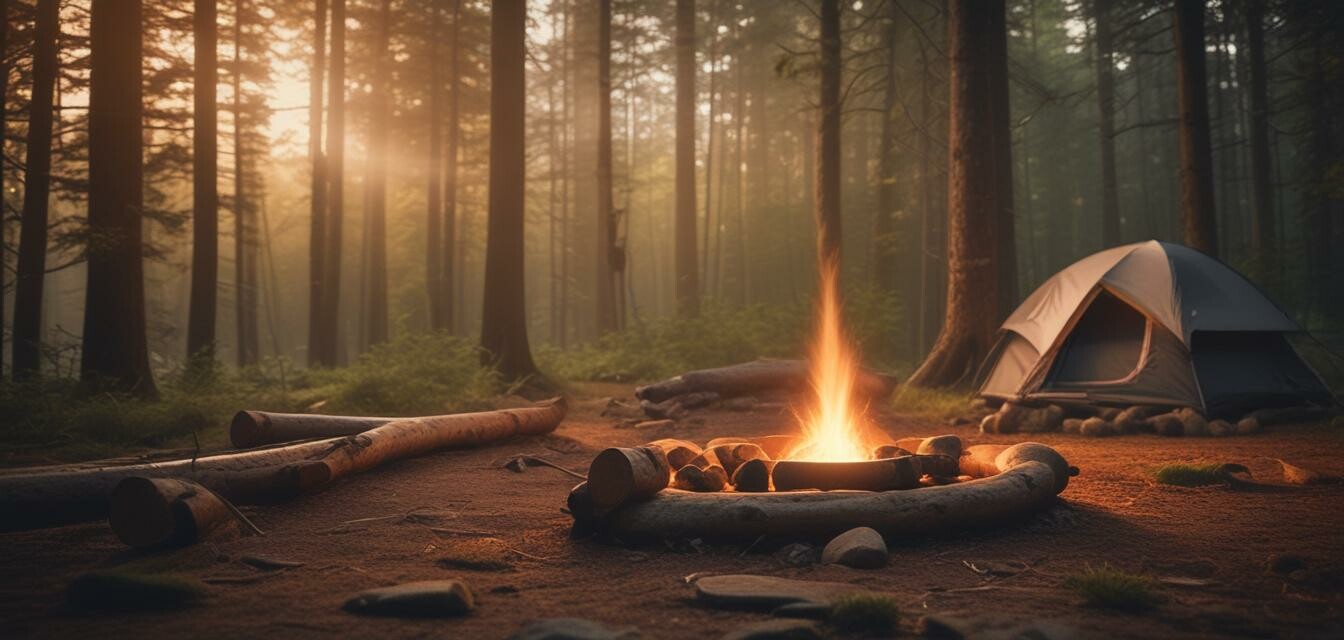
Tips for Reducing Your Campfire Impact
- Always follow local fire regulations and guidelines.
- Use established fire rings to minimize ground disturbance.
- Choose firewood wisely and avoid cutting down live trees.
- Extinguish your fire completely and clean up afterward.
- Consider alternatives to traditional campfires, like portable stoves.
Campfires can create a warm and inviting atmosphere while camping, but they also have the potential to cause significant environmental harm if not managed properly. In this guide, we will explore responsible campfire practices that help you minimize your impact on nature while enjoying the outdoor experience.
Understanding The Importance of Responsible Campfire Practices
Campfires are an integral part of the camping experience. However, they can lead to wildfires, habitat destruction, and pollution if not handled responsibly. By observing proper campfire etiquette, you can enjoy your time outdoors while protecting the environment.
1. Follow Local Fire Regulations
Before lighting a campfire, it's essential to understand the local regulations. Different regions have varying rules regarding campfires, especially during dry seasons or in fire-prone areas. Check with local authorities or visit the Camping News and Trends section for updates on fire regulations.
Key considerations:
- Check for fire bans or restrictions.
- Understand the fire season for your location.
- Follow guidelines from local parks and forest services.
2. Use Established Fire Rings
Whenever possible, use designated fire rings or pits to help reduce soil and vegetation disturbance. This practice keeps campfire impacts localized and prevents the need to create new fire sites.
3. Choose Firewood Wisely
Using the right type of firewood can make a significant difference. Here are some tips for choosing firewood:
- Collect only dead and downed wood from the ground, avoiding live trees.
- Use small, dry wood for kindling to create a sustainable fire.
- Consider purchasing firewood locally to combat the spread of invasive species.
4. Properly Extinguish Your Fire
Always ensure your fire is completely out before leaving the campsite. Use the following steps:
- Let the fire burn down to ashes.
- Sprinkle water over the ashes until hissing sounds cease.
- Stir the ashes to ensure no embers remain.
- Check for hot spots and repeat the process if necessary.
5. Clean Up After Your Campfire
Cleaning up after your campfire not only ensures you're leaving the place as you found it, but it also protects wildlife from ingesting hazardous materials. Use these tips:
- Remove all trash and food scraps from the area.
- Pack out any leftover materials, such as burnt wood or packaging.
- Leave no trace of your visit to the campsite.
6. Consider Alternatives to Campfires
If your primary goal is cooking or warmth, consider portable camping stoves or picnic heaters, which often leave a smaller footprint than traditional campfires. Check out our Cooking & Meal Prep guides for more ideas on safe cooking options.
Summary of Responsible Practices
| Practice | Benefits |
|---|---|
| Follow fire regulations | Avoids fines and reduces wildfire risk |
| Use established fire rings | Less environmental impact |
| Choose firewood wisely | Protects surrounding flora and fauna |
| Properly extinguish your fire | Prevents accidental wildfires |
| Clean up after yourself | Preserves the natural beauty for others |
| Consider alternatives | Reduces impact and can be more efficient |
Pros
- Enhances wildlife preservation.
- Promotes a cleaner camping experience.
- Reduces risk of wildfires.
- Encourages sustainable practices.
Cons
- May require adjustments to traditional camping experiences.
- Some might find alternatives lack the charm of a campfire.
Conclusion
Responsible campfire practices are crucial in ensuring that your outdoor experiences are enjoyable while preserving the natural beauty of our landscapes. By following the tips outlined in this guide, you can reduce your campfire impact and encourage others to do the same. For more insights on camping gear and practices, visit our Camping Tips and Tricks section.